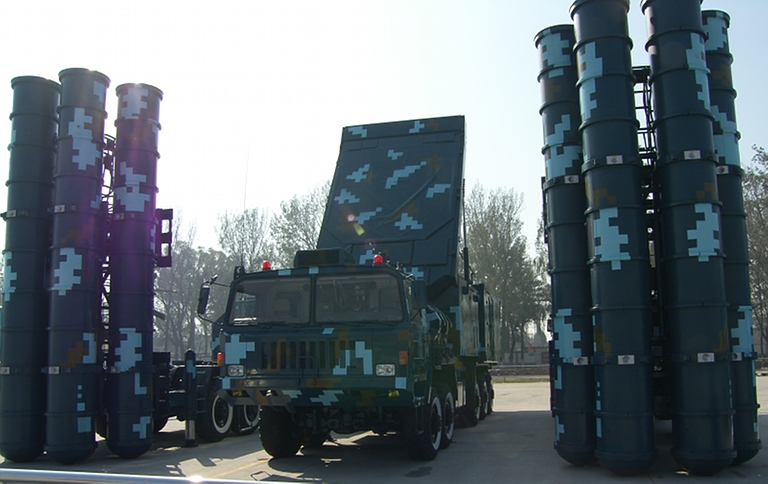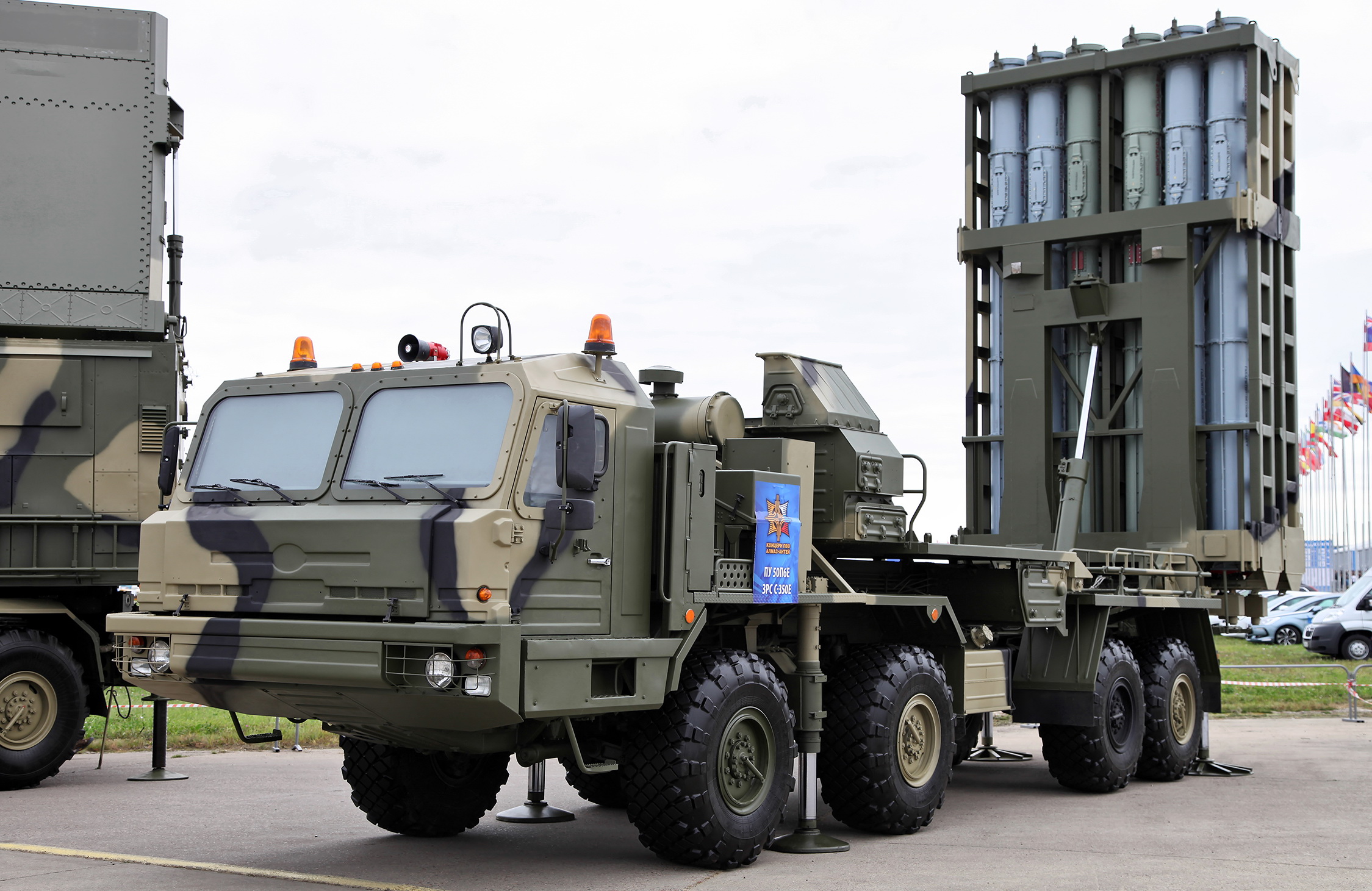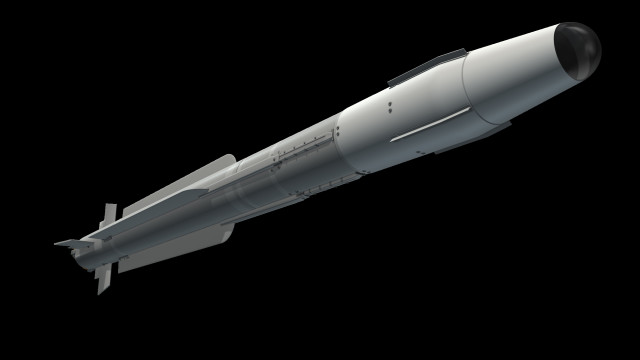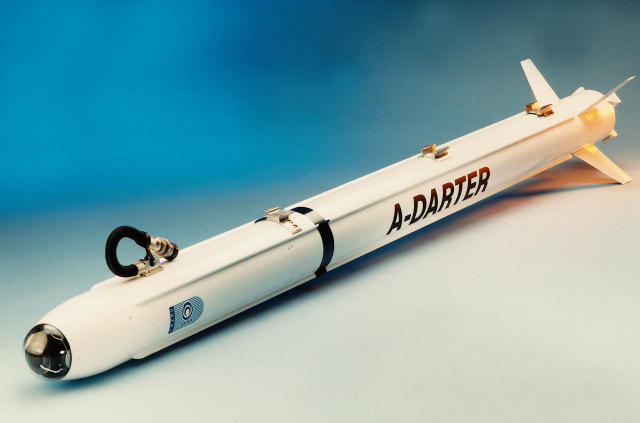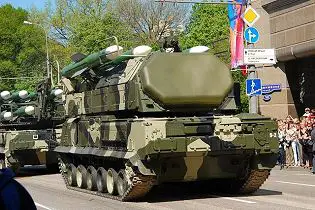Showing posts with label Air Defence Missile Systems. Show all posts
Showing posts with label Air Defence Missile Systems. Show all posts
Buk M3 Medium-range Air Defense Missile System, Russia
Here goes the code of the element you want to show
HQ-9 Medium-to-Long Range Air Defense Missile System, China
S-500 Prometheus 55R6M Triumfator-M, Long Range Air Defense and Anti-Ballistic Missile System, Russia
The S-500 "Prometey (Прометей)" ("Prometheus") is the latest Russian surface-to-air missile (mainly Anti-ballistic missile) system, currently under development by the Almaz-Antey company. It is also known as 55R6M "Triumfator-M". Prototype testing is expected to begin in 2015. The S-500 is planned to enter service at the end of this decade, possibly in 2017-2018. Russia plans to field ten battalions of S-500 missiles.
S-350E Vityaz (50R6) Medium Range Air Defence Missile System, Russia
The dual defence missile system was unveiled at the MAKS 2013 Airshow held in Moscow in August 2013.
A-235 Samolet-M Anti-Ballistic Missile System, Russia
Mica Vertical Launch Short-Range Air-Defence System, France
The MBDA vertical launch Mica short-range air defence system, VL Mica SHORAD, is an anti-air multi-target, all weather, fire-and-forget short and medium-range missile system. It is intended for use both by air platforms as individual missiles as well as ground units and ships, which can be equipped with the rapid fire MICA Vertical Launch System. It is fitted with a thrust vector control (TVC) system. The modular VL Mica system includes a tactical operations centre with up to four multi-round missile launchers. MBDA displayed the system for the first time in February 2000 at the Asian Aerospace 2000 Show in Singapore. The first vertical launch of the VL Mica missile took place in 2001 at the Centre d'Essais des Landes range in France.
A-Darter Air-to-Air Missile (AAM), South Africa
A-Darter, also known as V3E Agile Darter, is a fifth-generation short range, a modern short-range infrared homing ("heat seeking") air-to-air missile, featuring countermeasures resistance with a 180-degree look angle and 120-degrees per second track rate,under development by South Africa’s Denel Dynamics (formerly Kentron) and Brazil’s Mectron, Avibras and Opto Eletrônica.It will equip South African Air Force’s Saab JAS 39 Gripen C/D and BAe Hawk 120; Brazilian Air Force’s A-1M AMX, Northrop F-5BR and Gripen E/F.It is expected to be in production before the end of 2015.
Buk-M2E Air Defence Missile System, Russia
The Buk-M2E (NATO name SA-17 Grizzly) is a Russian made mobile medium-range surface-to-air missile (SAM) system designed to defend field troops and logistical installations against air threats. SA-17 Grizzly is an upgraded version of the proven Buk-M1 mobile air defense system and retains its main features. It defeats strategic and tactical aircraft, tactical ballistic missiles, cruise missiles, air-launched missiles, guided aerial bombs and helicopters, including hovering rotorcraft, in the presence of heavy electronic countermeasures and under intense enemy fire. Moreover, it can be used against sea-surface and ground targets. The Buk-M2E SAM system includes combat elements, such as atarget-acquisition radar, a battle management station, self-propelled firing vehicles, an illumination and guidance radar, loader-launcher vehicles, surface-to-air guided missiles, as well as maintenance and repair facilities. The combat elements can be mounted either on tracked or wheeled chassis. Wheeled trucks carry the maintenance facilities. The Buk-M2 can engage a wide variety of targets from aircraft to missiles flying at an altitude of between 10 and 24,000 m out a maximum range of 50 km in given conditions. The SA-17 Grizzly can engage simultaneous of up to 24 targets flying from any direction.
Iron Dome Air Defence Missile System, Israel
The Iron Dome is an effective and innovative mobile defense solution for countering short range rockets and 155 mm artillery shell threats with ranges of up to 70 km in all weather conditions, including low clouds, rain, dust storms or fog. The Iron Dome is developed by the Israeli Defence Company Rafael. Development of Iron Dome began in January 2008, and is virtually complete after just two and a half years. The system uses a unique interceptor with a special warhead that detonates any target in the air within seconds. The Iron dome is a cost effective system that can handle multiple threats simultaneously and efficiently. The Iron Dome system has been selected by the Israeli Defense Ministry as the best system offering the most comprehensive defense solution against a wide range of threats in a relatively short development cycle and at low cost. The Iron Dome System, which is expected to provide defense to residents of Israel's South against rockets launched from the Gaza Strip, is entering into the final stages of performance testing and was even presented this week for the first time in an exhibition of technological weapons which was held at the Rabin military base. The Iron Dome system became operational in early 2011, initially deployed at air force bases in southern Israel. It will be set up in other areas, such as the town of Sderot, during significant escalations along the Gaza border.
Crotale Short Range Air Defence System, France
The Crotale EDIR (Ecartométrie Différentielle InfraRouge, "InfraRed Differential Ecartometry") is an all-weather short-range anti-air missile, which can be used to intercept low-flight anti-ship missiles and aircraft.The origins of this air defense system lie in South African order. In 1964 South Africa ordered Thomson-Houston (later Thomson-CSF and now Thales) to develop a point defense system. Development was mostly funded by South Africa, and partially by the French government.Developed by Thales Air Defense (formerly Thomson-CSF Airsys) based at Bagneux in France.
These systems were delivered to South Africa between 1971 and 1973. It was locally named the Cactus. Soon after the French air force ordered this system for airfield defense, naming the system Crotale. It entered service in 1972. By 1978 a total of 20 batteries were delivered.
SPYDER Surface-to-Air Launcher for PYthon 5 and DERby Missiles, Israel
Rafael Armament Development Authority, the MBT Missile Division and Elta Radar Division of Israel Aircraft Industries have announced the SPYDER surface-to-air PYthon 5 and DERby Air Defence Missile System. Rafael is the prime contractor and IAI the major subcontractor for the SPYDER program.
SPYDER is a low-level quick-reaction surface-to-air missile system capable of engaging aircraft, helicopters, unmanned air vehicles, drones and precision-guided munitions. It provides air defence for fixed assets and for point and area defence for mobile forces in combat areas. The SPYDER launcher is designed to fire PYthon 5 and DERby surface-to-air missiles.
Akash Surface-to-Air Missile System, India
The Akash (sky) is an all-weather medium-range surface-to-air missile (SAM) system developed in India. It provides multidirectional and multitarget area defence. The missile system was indigenously developed as part of the integrated guided-missile development programme (IGMDP). In operation from 1983 to 2007, the programme developed a range of missiles, including the Nag, Agni and Trishul missiles and the Prithvi ballistic missile.
In 2008, the Indian Air Force (IAF) introduced its indigenous SAM system after nine successful field trials. Some modifications to the Akash SAM, such as the launch platform, were made to the army version to meet mobility and gradeability requirements.
In June 2010, the Defence Acquisition Council (DAC) of India ordered Rs125bn ($2.8bn) of the army version Akash missile system for induction into the Indian Army.
The Medium Extended Air Defense System (MEADS)
The Medium Extended Air Defense System (MEADS) is a tri-national missile defense project of the United States, Germany, and Italy. MEADS is currently in the design and development phase, but once operational, it will use the new Patriot Advanced Capability-3 (PAC-3) Missile Segment Enhancement missiles to protect ground forces and fixed military positions against attack from tactical ballistic missiles, low and high altitude cruise missiles, aircraft, and unmanned aerial vehicles.
Advanced Hypersonic Weapon (AHW), United States of America
The Advanced Hypersonic Weapon (AHW)
is a demonstrative long-range glide vehicle capable of flying within the
planet's atmosphere at hypersonic speed. The AHW technology demonstration
programme is managed by the US Army Space and Missile Defence Command (USASMDC)
/ Army Forces Strategic Command (ARSTRAT).
The technology was developed through
the cooperative effort of the US Department of Defence to evaluate a
conventional prompt global strike (CPGS) capability for striking time-sensitive
high-value targets.
In November 2011, AHW was launched
from the Pacific Missile Range Facility in Kauai, Hawaii, to the Reagan Test
Site on the Marshall Islands. The glide vehicle successfully hit the target,
which is located about 3,700km away from the launch site. The vehicle's flight
characteristics were gathered from space, air / sea and ground-based platforms.
The test was conducted to demonstrate
hypersonic boost-glide technologies and trial the capability for atmospheric
flight at long-ranges. The flight test was carried out in accordance with the
regulations of Strategic Arms Reduction Treaty I, as well as the
Intermediate-Range Nuclear Forces Treaty.
Subscribe to:
Comments (Atom)

